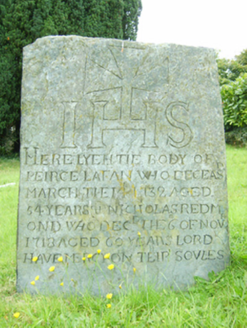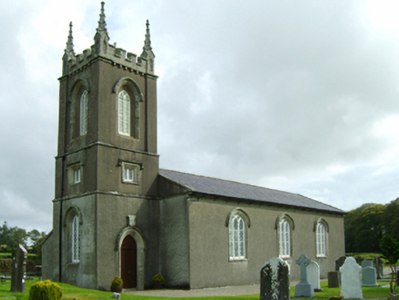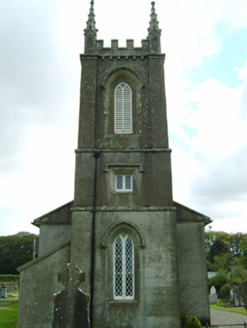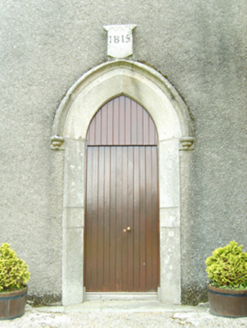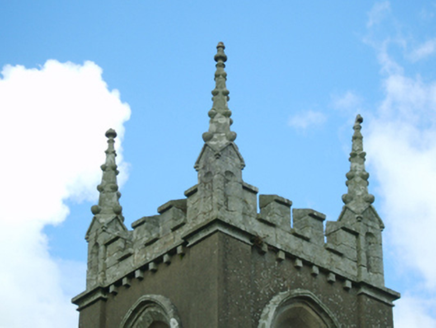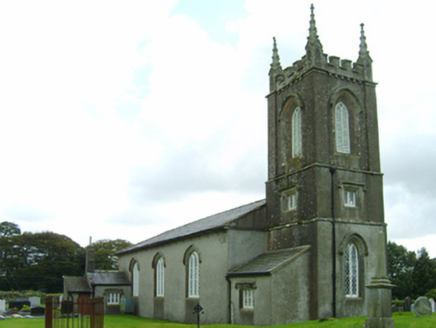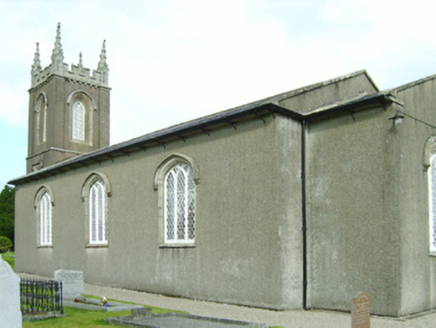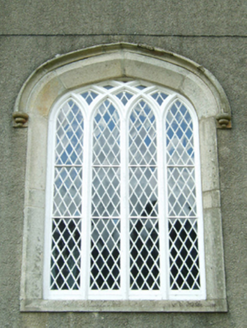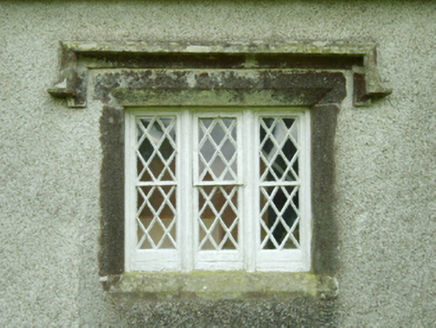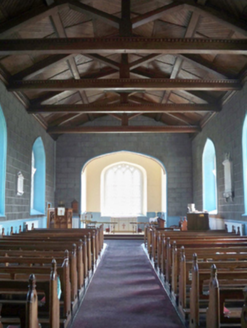Survey Data
Reg No
15701415
Rating
Regional
Categories of Special Interest
Architectural, Artistic, Historical, Social, Technical
Original Use
Church/chapel
In Use As
Church/chapel
Date
1810 - 1820
Coordinates
289577, 148397
Date Recorded
28/09/2007
Date Updated
--/--/--
Description
Detached four-bay double-height Board of First Fruits Church of Ireland church, built 1815; dated 1815, on a rectangular plan comprising three-bay double-height nave opening into single-bay double-height chancel (east) with single-bay three-stage tower to entrance (west) front on a square plan. "Improved", 1826, producing present composition. Consecrated, 1827. Renovated 1895. Renovated, 1914; 1917, with interior "improved". Repaired, 1959. Pitched slate roofs with cut-granite ridges, lichen-covered cut-granite coping to gables, and cast-iron rainwater goods on slate flagged eaves retaining cast-iron octagonal or ogee hoppers and downpipes. Fine roughcast walls; fine roughcast (first stage) or rendered (upper stages) surface finish (tower) with lichen-covered cut-granite stringcourses including lichen-covered cut-granite stringcourse (bell stage) on cut-granite dentil corbels supporting crocketed diagonal obelisk pinnacles framing battlemented parapets having cut-granite "saddleback" coping. Tudor-headed window openings with interlocking timber Y-mullions, and cut-granite surrounds having chamfered reveals with hood mouldings on label stops framing fixed-pane fittings having cast-iron lattice glazing bars. Tudor-headed window opening (east) with interlocking timber Y-mullions, and cut-granite surround having chamfered reveals with hood moulding on label stops framing fixed-pane fittings having cast-iron lattice glazing bars. Pointed-arch window opening (tower) with carved timber Y-mullion, and cut-granite surround having chamfered reveals with hood moulding on label stops framing fixed-pane fittings having cast-iron lattice glazing bars. Square-headed window openings (second stage), cut-granite surrounds having chamfered reveals with hood mouldings framing timber casement windows having cast-iron lattice glazing bars. Pointed-arch openings (bell stage), cut-granite surrounds having chamfered reveals with hood mouldings framing applied timber Y-mullions on louvered timber fittings. Interior including vestibule (west); square-headed door opening into nave with timber panelled double doors; full-height interior open into roof "improved", 1914; 1917, with carpeted central aisle between finial-topped timber pews, carved timber dado rail, pair of cut-white marble Classical-style wall monuments (1854; 1914), exposed strutted King post timber roof construction with wind braced diagonal timber boarded vaulted ceiling in carved timber frame on dentilated cornice, reclaimed timber panelled pulpit on an octagonal plan with timber clerk's desk, and Tudor-headed chancel arch framing stepped dais to chancel (east) with wrought iron-detailed balusters supporting polished brass communion railing centred on cloaked altar below "East Window". Set in landscaped grounds with rendered, ruled and lined piers to perimeter having shallow pyramidal capping supporting arrow head-detailed wrought iron double gates.
Appraisal
A church erected with financial support from the Board of First Fruits (fl. 1711-1833) representing an important component of the early nineteenth-century built heritage of County Wexford with the architectural value of the composition, one variously ascribed to John Bowden (d. 1822) of Dublin (RCB) or to a now-obscure 'Ellis Architect' (Irish Ecclesiastical Gazette 1917, 781), confirmed by such attributes as the standardised nave-with-entrance tower plan form, aligned along a liturgically-correct axis; the "pointed" profile of the openings underpinning a so-called "Later English" Georgian Gothic theme with the chancel defined by an elegant "East Window"; and the crocketed pinnacles embellishing the tower as a picturesque eye-catcher in the landscape: meanwhile, aspects of the composition illustrate the continued development or "improvement" of the church with the financial assistance 'of a loan…from the same Board' (Lewis 1837 II, 615). Having been well maintained, the elementary form and massing survive intact together with substantial quantities of the original fabric, both to the exterior and to the interior where contemporary joinery; and restrained wall monuments, all highlight the artistic potential of the composition: meanwhile, an exposed pitch pine roof donated (1914) by Reverend Henry Kyle Atkinson (1849-1914) pinpoints the engineering or technical dexterity of a church forming part of a self-contained group alongside the adjacent Templeshanbo Erasmus Smith School (see 15701416) with the resulting ensemble making a pleasing visual statement in a sylvan street scene.
